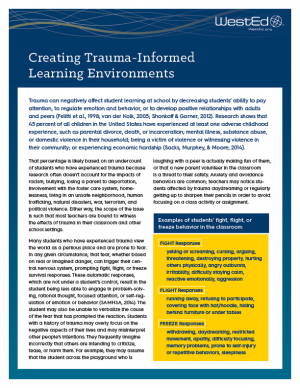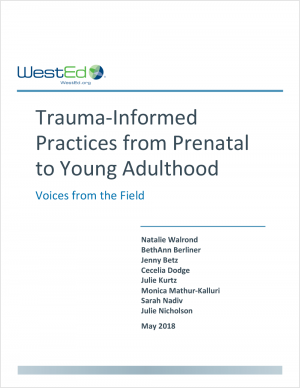Creating Trauma-Informed Learning Environments
Description
Research shows that 45 percent of all children in the United States have experienced at least one adverse childhood experience, such as parental divorce, death, or incarceration; mental illness, substance abuse, or domestic violence in their household; being a victim of violence or witnessing violence in their community; or experiencing economic hardship.
Trauma can negatively affect student learning at school by decreasing students’ ability to pay attention, to regulate emotion and behavior, or to develop positive relationships with adults and peers.
What can educators do to support students with trauma in their history?
This brief, produced by the Mid-Atlantic Comprehensive Center at WestEd, offers five important actions teachers can take to design trauma-sensitive learning environments. These actions include:
- Creating trusting, caring, and responsive relationships with students
- Creating safe and predictable environments
- Using inquiry to identify patterns of behavior and possible triggers in the classroom
- Using positive behavior supports and social-emotional learning strategies
- Engaging in their own self-care
For more information about trauma-informed practices and resilience, visit WestEd.org/TIP.
Resource Details
Product Information
Copyright: 2019Format: PDF
Pages: 2
Publisher: WestEd
Stay Connected
Subscribe to the E-Bulletin and receive regular updates on research, free resources, solutions, and job postings from WestEd.
Your download will be available after you subscribe, or choose no thanks.






